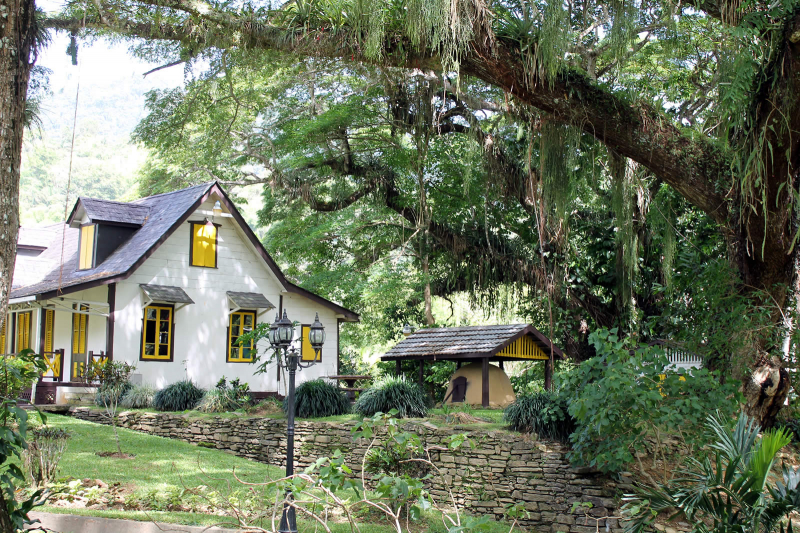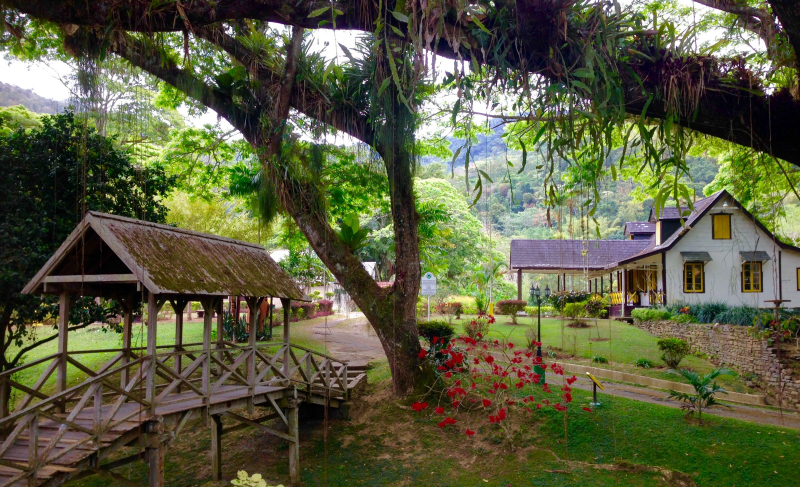Lopinot House
Lopinot House is a historic property in Lopinot Village, Arouca, located on a plot of land inside the Lopinot Historical Complex. On the west, the Lopinot Road, on the east, the Lopinot River, on the north, State Lands (field), and on the south, private residences. The Lopinot House is named after the estate's first owner, a Frenchman called Charles Joseph Count de Lopinot. In 1800, Count de Lopinot arrived in Trinidad and established the La Reconnaissance Estate. Lopinot House is one of the few remaining structures from the La Reconnaissance Estate, having been erected in 1806.
At La Reconnaissance, enslaved Africans and indentured Indians toiled to grow cocoa and resided around the Estate. The Lopinot Road was built to make it easier to get to the Estate. The estate and hamlet of La Reconnaissance were vital to the growth and colonization of the area, but the owner's name, Lopinot, became associated with the estate and community. Venezuelan peons also traveled to the Lopinot Valley in the 19th century to labor on the estate. Many archaeological discoveries on the site confirm these layers of history, and the museum depicts the village's culture and history.
The King of England awarded Loppinot 478 acres of property in 1806, and he grew cocoa on this picturesque agricultural land, which he named La Reconnaissance. The rebuilt estate home has been turned into a modest museum with Amerindian items on exhibit. To the north of the museum, there is a leisure park and a savannah. Along the river are several shelters, which are ideal for picnickers who prefer to wade or even swim in the cool water. For those who prefer shaded trees and dry ground, picnic seats and tables are also available.
Location: Lopinot, Trinidad











